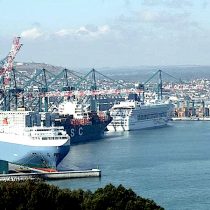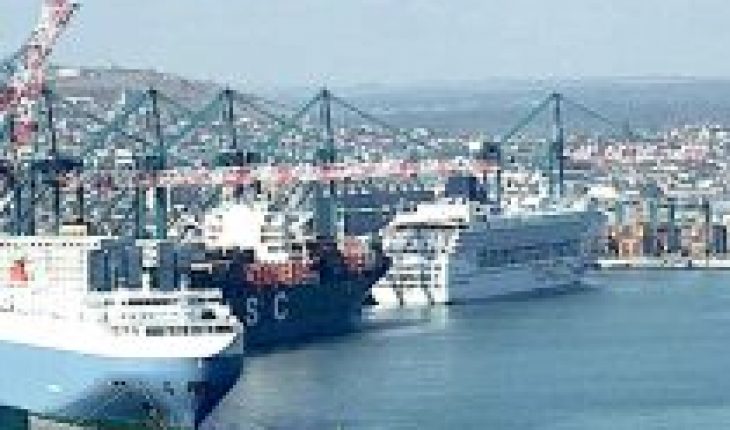
The study “Determination of the Risk of the Impacts of Climate Change on the Coasts of Chile”, led by Patricio Winckler, an expert in climate change, global warming and coastal constructions, found that 18,000 hours of closures have caused storm surges over the past ten years. There are eight major Chilean ports with the most affected open water, both state and concessional: Arica, Iquique, Antofagasta, Coquimbo, Quintero, Valparaíso, San Antonio and San Vicente.
The academic of the School of Ocean Civil Engineering of the University of Valparaiso ensures that “port closures generate a very high economic impact on shipowners, dealers, companies that make up the logistics chain and, in the end, to whom we buy the products that pass through there”.
This year alone the port of San Antonio has had to carry out about forty closures, which causes significant disruptions in the expert’s opinion, as he explains “many of these ships have had to be diverted to Valparaiso, causing complications in logistical operation and additional costs in the transfer of cargo”.
“The problem is that in the central area there are few naturally sheltered bays and the ports of Quintero, Valparaiso and San Antonio have a partial degree of shelter in the face of the storm surges generated in front of central Chile,” winckler says.
From the logic of adaptation to climate change, the academic says that “there are short- and long-term adaptation strategies in terms of improving the operation of be attracted sites and ensuring the performance of port infrastructure”.
“In the short term, storm surge alert systems can be implemented based on the combination of forecasting and continuous wind, swell and sea level models, which together allow the operational conditions of a port to be projected several days in advance,” he says.
According to the UV academic “these systems can even be designed for the different phases of operation, such as when the port practical accesses the ship for approach maneuvers within the dock and when the vessel is docked. These types of forecasts, coupled with dynamic response mooring systems, reduce the uncertainty of the ship’s operation.”
“From long-term infrastructure management, the operational conditions of a port dock can be improved through dredging, change in the energy absorption properties of the docks or the extension of existing breakwaters,” he adds.
Winckler explains that “the latter option has investments of the order of hundreds to billions of dollars which, with exceptions such as the San Antonio PGE, make its materialization unworkable during the concession period. They also involve relevant environmental impacts, which must be mitigated or compensated in proportion to the impact they mean.”
In view of the expected sea level rise as the century progresses, the expert notes that “combined strategies can be used to reduce the impact of oversteer of the swell on esplanades, coasters and be docking sites. It is necessary to study the eventual relocation of flood buildings to higher sectors, and to design flexible and redundant systems in critical installations of the load transfer process, among other specific actions that will depend on each case.”
“In addition, preventive maintenance should be prioritized over repair of works experiencing obsolescence, as it is more cost-effective to maintain in the context of planning than to repair after an emergency,” he says.
Finally, Winckler suggests incorporating methodological changes in port infrastructure management in the context of climate change.
“Regulatory instruments such as the Environmental Impact Assessment System should explicitly incorporate the impact assessment associated with changes in storm surges and sea level, as well as the potential effects of coastal erosion and those on coastal dynamics,” he explains.
“It should also extend to territorial planning instruments in flood-prone coastal areas, as it is at these levels that success or failure in the management of the climate crisis in these territories is played,” he stresses.





